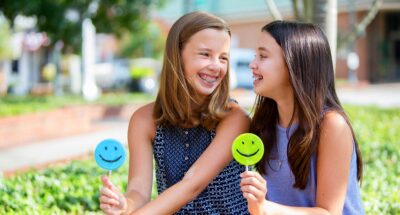
The Generosity Experiment
Students conduct their own experiment around being generous to others and observe how it feels in their bodies and minds.

Students conduct their own experiment around being generous to others and observe how it feels in their bodies and minds.
Students will:
Jenna Whitehead, Ph.D., Simon Fraser University
Researchers studied 20 toddlers under two years of age as they shared treats with puppets, and discovered the children were happier giving treats away than receiving them. Even more surprising, children showed greater happiness when giving away their own treats compared to giving away treats they found or were given specifically to share.
This suggests the positive feelings we get from being generous, even when it costs us something (sometimes called the “warm glow”), may be an innate human trait that motivates us to be prosocial from very early in life.
Research reveals that generosity often benefits the giver as much as the receiver. For example, we experience greater happiness when we give to others than when we spend on ourselves. Even though humans can be selfish at times, this happiness we feel as a result of our generosity proves that humans are wired to care for each other.
The positive outcomes of generosity extend to schools, as well. Indeed, science has found that school-age children who engage in kind acts are more well-liked by their peers and have improved well-being. And when students are more generous, they are less likely to feel superior to others and are more likely to support equal treatment for all groups. Thus, when we help students recognize the good feelings that come from generous acts, we create a positive feedback loop throughout the school, fostering a school community where everyone willingly tends to each others’ needs.

Are you ready to build a kinder, happier school where everyone belongs? Join Greater Good Educators! Explore the science of well-being in a supportive community of educators from around the world. Registration is now open for the 2025-2026 school year!
Comments